A few weeks ago I was asked if I would take two turtles from a colleague at work who was moving house and would no longer have an environment for them. They had "arrived" spontaneoulsy in his garden, located in a suburb of Jakarta known for (even named for) turtles some time earlier. My friend did not know what kind of turtle they were but based on his description I was expecting one Cuoro Amboiensis (I was right) and one Asian Softshell (I was wrong). The softshell turned out to be a beautiful female Cyclemys Dentata.
To the right you can see photos of the new Cuoro Amboiensis, a male - it may be a sub-type; and the female Cyclemys Dentata. Both are doing well in the pond. You can also see my daughter's guinea pigs and even my daughter, Sarah, herself. Look in again; there'll be more additions soon.
Saturday, 5 December 2009
Friday, 21 August 2009
Pictures of my Turtles
To the right I have uploaded some pictures of my turtles. There are Asian Leaf Turtles, Malayan Box Turtles, a Borneo Black Marsh Turtle and a Sulawesi Tortoise. You can see their formal Latin designations in the article entitled My Turtles. They are shown swimming, climbing, sitting on the lawn and among the rocks. It's difficult to get good quality shots but these give a reasonable indication of what they look like. In this climate these animals are quite easy to keep. They biggest problem is maintaining their health as they can be prone to parasites and infections.
Thursday, 20 August 2009
The Simplicity Of Pond Maintenance
Submitted By: Joel Stephens
Believe it or not, a well-constructed pond should take less maintenance than a lawn that is aerated, fertilized & mowed with any semblance of consistency. Why? Because the whole idea behind creating a great pond is the formation of an independent ecosystem...a self-sustaining habitat for both flora & fauna. If the groundwork is properly laid, there are only a few things to worry about to ensure that your koi or goldfish never go "Belly Up". Stick to these basic points of pond maintenance, and you should be able to enjoy your new ecosystem for many years to come.
One of the most important things you should concern yourself with is the water level.
Evaporation is a natural aspect of any ecosystem, and it must be monitored weekly. Unlike a sea or lake of any kind of volume, your pond does not have the ability to hold as much water during the rainy seasons as it will lose during the dry seasons. Check the levels often & fill as needed to ensure a fresh infusing of water for the health and safety of all plant & animal life in your habitat. If your level has not dropped 10% in 3 weeks, pump some of your water out and add fresh water in. Be sure to add a dechlorinator to offset the amount chlorine that is in the new water. Follow the instructions of the specific product's packaging for optimal performance.
Next, check your pond for decaying plants and other debris that could "break down" at the bottom of your pond. This "break down" can release toxins that will harm, and even kill, your fish over time. Besides being unhealthy for your water features ecosystem, no one wants to gather around a pond that is full of rotting plants and algae all summer long. Take a few minutes and remove any thing that you find from the bottom of your pond at least every 2 weeks.
Finally, check your ponds filtering system every 5 weeks for clogs or other obstructions that would inhibit the proper flow of water. Remember, your filter should be running 24/7 with no interruptions, turning over the total water volume in about 2 hours. If it stops for even a few hours, it could lose a huge amount of its beneficial bacteria. To gain this back could take upwards of 4 weeks depending on what was lost! You will need to clean your filter as often as necessary to ensure a healthy ecosystem for your pond. The frequency will vary greatly depending on what type of filter you are using, and how large your pond is. Some mechanical filters will need to be cleaned monthly while a good biomechanical (mat based) filter may only need to be cleaned 2-3 times per year! The best way to know is to always check your water clarity! The less clear, the less filtration!
With a little bit of maintenance, a pond can become a wonderfully relaxing place for the entire family to enjoy. Follow these simple rules, with a little bit of consistency, and your pond will give you nothing but pleasure for many years to come.
Published At: Isnare Free Articles Directory http://www.isnare.comPermanent Link: http://www.isnare.com/?aid=245078&ca=Gardening
About Joel Stephens
After being a student of the University of Oregon's Architecture & Allied Arts program, Joel Stephens began a 10-year journey in furniture design & manufacturing. As well as being an ASID Industry Partner for lines he created, Joel established Peniel Products, an online retailer of Home Furnishings and Decor.
Source: www.Isnare.com
Believe it or not, a well-constructed pond should take less maintenance than a lawn that is aerated, fertilized & mowed with any semblance of consistency. Why? Because the whole idea behind creating a great pond is the formation of an independent ecosystem...a self-sustaining habitat for both flora & fauna. If the groundwork is properly laid, there are only a few things to worry about to ensure that your koi or goldfish never go "Belly Up". Stick to these basic points of pond maintenance, and you should be able to enjoy your new ecosystem for many years to come.
One of the most important things you should concern yourself with is the water level.
Evaporation is a natural aspect of any ecosystem, and it must be monitored weekly. Unlike a sea or lake of any kind of volume, your pond does not have the ability to hold as much water during the rainy seasons as it will lose during the dry seasons. Check the levels often & fill as needed to ensure a fresh infusing of water for the health and safety of all plant & animal life in your habitat. If your level has not dropped 10% in 3 weeks, pump some of your water out and add fresh water in. Be sure to add a dechlorinator to offset the amount chlorine that is in the new water. Follow the instructions of the specific product's packaging for optimal performance.
Next, check your pond for decaying plants and other debris that could "break down" at the bottom of your pond. This "break down" can release toxins that will harm, and even kill, your fish over time. Besides being unhealthy for your water features ecosystem, no one wants to gather around a pond that is full of rotting plants and algae all summer long. Take a few minutes and remove any thing that you find from the bottom of your pond at least every 2 weeks.
Finally, check your ponds filtering system every 5 weeks for clogs or other obstructions that would inhibit the proper flow of water. Remember, your filter should be running 24/7 with no interruptions, turning over the total water volume in about 2 hours. If it stops for even a few hours, it could lose a huge amount of its beneficial bacteria. To gain this back could take upwards of 4 weeks depending on what was lost! You will need to clean your filter as often as necessary to ensure a healthy ecosystem for your pond. The frequency will vary greatly depending on what type of filter you are using, and how large your pond is. Some mechanical filters will need to be cleaned monthly while a good biomechanical (mat based) filter may only need to be cleaned 2-3 times per year! The best way to know is to always check your water clarity! The less clear, the less filtration!
With a little bit of maintenance, a pond can become a wonderfully relaxing place for the entire family to enjoy. Follow these simple rules, with a little bit of consistency, and your pond will give you nothing but pleasure for many years to come.
Published At: Isnare Free Articles Directory http://www.isnare.comPermanent Link: http://www.isnare.com/?aid=245078&ca=Gardening
About Joel Stephens
After being a student of the University of Oregon's Architecture & Allied Arts program, Joel Stephens began a 10-year journey in furniture design & manufacturing. As well as being an ASID Industry Partner for lines he created, Joel established Peniel Products, an online retailer of Home Furnishings and Decor.
Source: www.Isnare.com
Designing Garden Ponds
Submitted By: Joel Stephens
The design of ponds, or garden ponds as they are often called, can seem a little bit daunting at first. A myriad of questions can arise that may confuse or discourage a homeowner from even beginning the project. How big should the pond be? Should it be a garden pond, a koi pond or a swimming pond? Can I implement the features I want? Even though the "pros" would like you to think the answers to these and other questions are worth paying them hundreds (if not thousands) of dollars, I am here to tell you that life is not that hard. A garden pond is not only one of the simpler things to install within a landscape, it is also one of the most rewarding. If you can answer these questions about your dreams for your pond, you will be well on your way to enjoying the pearl of your outdoor environment!
The first, and most important, question you must ask yourself is "What is the purpose of this garden pond?" Every Pond must be there for a reason. These don't have to be earth-shattering motivations, but we must understand that the pond exists to fill a need in our lives. What is that need for you? Do you desire the ambience that a garden pond can create, with its bubbling fountains and gentle splashing of cascading water? Or maybe you want to see birds drinking from your garden pond and see the fish swimming around the base of the lily pads. If you're like me, your pond should be deep enough to give you a place to cool off in the hot summer sun, while also tickling your ears! Whatever your reasons for creating a pond, make sure that they are truly YOUR reasons. You don't want to go through all the work of building a retreat, only to not take proper pleasure from it!
The second question you need to answer is "What type of pond will fill this need?" There are 3 main types of ponds to choose from. The first (and most popular) pond is called a Water Garden. A water garden is a pond created to support both plant and animal life. It can be fairly small, to accommodate small spaces, and should have fish that do not grow too large. The second type of pond is the Koi Pond. Koi Ponds are much larger than a standard Water Garden simply because Koi fish tend to grow quite large. Koi Ponds can also only sustain certain types of flora because Koi fish love to nibble on plants! The third type of pond to choose from is the Swimming Pond, my favorite! The Swimming Pond's main defining attribute is its ability to accommodate full immersion, with a depth capable of cooling off even the hottest of homeowners. Some of you may be thinking of combining the Koi Pond with the Swimming Pond into a hybrid of sorts, and just for the record, I don't recommend it! Koi fish like tranquility and the shock of a swimming buddy may be a bit too much for them. They may also disappear into a depth that makes them difficult to see. Who wants a Koi pond if you can't see the Koi fish?
The final question is concerning the features of your garden pond. What do you want to see in your landscape? Do you love the look of water spilling over the edge of a fall? Maybe you're into the gentle sounds of streams feeding into your pond with a soothing steadiness found only in nature! What about the strength and longevity of a properly placed boulder here and there? No matter what features you choose, the most important factor to consider at this stage is cost!
What is your overall budget? Try to stick to that as closely as possible. The worst feeling in the world is a pond project that is meant to bring peace and serenity, halted by a lack of funds!
Garden Ponds can be a welcome addition to any outdoor space! With a little time, and some honest answers to simple questions, anyone can create a pond that fills their space with the exact ambience that they desire. Just remember, the best person to design your garden pond is YOU (because you have to live with it)!
Published At: Isnare Free Articles Directory http://www.isnare.comPermanent Link: http://www.isnare.com/?aid=399644&ca=Home+Management
About Joel Stephens
After being a student of the University of Oregon's Architecture & Allied Arts program, Joel Stephens began a 10-year journey in furniture design & manufacturing. As well as being an ASID Industry Partner for lines he created, Joel established Peniel Products, an online retailer of Home Furnishings and Decor.
Source: www.Isnare.com
The design of ponds, or garden ponds as they are often called, can seem a little bit daunting at first. A myriad of questions can arise that may confuse or discourage a homeowner from even beginning the project. How big should the pond be? Should it be a garden pond, a koi pond or a swimming pond? Can I implement the features I want? Even though the "pros" would like you to think the answers to these and other questions are worth paying them hundreds (if not thousands) of dollars, I am here to tell you that life is not that hard. A garden pond is not only one of the simpler things to install within a landscape, it is also one of the most rewarding. If you can answer these questions about your dreams for your pond, you will be well on your way to enjoying the pearl of your outdoor environment!
The first, and most important, question you must ask yourself is "What is the purpose of this garden pond?" Every Pond must be there for a reason. These don't have to be earth-shattering motivations, but we must understand that the pond exists to fill a need in our lives. What is that need for you? Do you desire the ambience that a garden pond can create, with its bubbling fountains and gentle splashing of cascading water? Or maybe you want to see birds drinking from your garden pond and see the fish swimming around the base of the lily pads. If you're like me, your pond should be deep enough to give you a place to cool off in the hot summer sun, while also tickling your ears! Whatever your reasons for creating a pond, make sure that they are truly YOUR reasons. You don't want to go through all the work of building a retreat, only to not take proper pleasure from it!
The second question you need to answer is "What type of pond will fill this need?" There are 3 main types of ponds to choose from. The first (and most popular) pond is called a Water Garden. A water garden is a pond created to support both plant and animal life. It can be fairly small, to accommodate small spaces, and should have fish that do not grow too large. The second type of pond is the Koi Pond. Koi Ponds are much larger than a standard Water Garden simply because Koi fish tend to grow quite large. Koi Ponds can also only sustain certain types of flora because Koi fish love to nibble on plants! The third type of pond to choose from is the Swimming Pond, my favorite! The Swimming Pond's main defining attribute is its ability to accommodate full immersion, with a depth capable of cooling off even the hottest of homeowners. Some of you may be thinking of combining the Koi Pond with the Swimming Pond into a hybrid of sorts, and just for the record, I don't recommend it! Koi fish like tranquility and the shock of a swimming buddy may be a bit too much for them. They may also disappear into a depth that makes them difficult to see. Who wants a Koi pond if you can't see the Koi fish?
The final question is concerning the features of your garden pond. What do you want to see in your landscape? Do you love the look of water spilling over the edge of a fall? Maybe you're into the gentle sounds of streams feeding into your pond with a soothing steadiness found only in nature! What about the strength and longevity of a properly placed boulder here and there? No matter what features you choose, the most important factor to consider at this stage is cost!
What is your overall budget? Try to stick to that as closely as possible. The worst feeling in the world is a pond project that is meant to bring peace and serenity, halted by a lack of funds!
Garden Ponds can be a welcome addition to any outdoor space! With a little time, and some honest answers to simple questions, anyone can create a pond that fills their space with the exact ambience that they desire. Just remember, the best person to design your garden pond is YOU (because you have to live with it)!
Published At: Isnare Free Articles Directory http://www.isnare.comPermanent Link: http://www.isnare.com/?aid=399644&ca=Home+Management
About Joel Stephens
After being a student of the University of Oregon's Architecture & Allied Arts program, Joel Stephens began a 10-year journey in furniture design & manufacturing. As well as being an ASID Industry Partner for lines he created, Joel established Peniel Products, an online retailer of Home Furnishings and Decor.
Source: www.Isnare.com
Garden Pond Construction
By Philip Swindells
The construction of a garden pond demands considerable care and attention, but is well within the capabilities of most practical gardeners. There are a number of different methods of construction, each having virtues from both a practical and aesthetic point of view. The most important factors are ensuring that the structure is secure and water-tight, and that the accommodation afforded is suitable for the plants and fishes that it is intended to introduce. Careful planning is an essential ingredient for success.
Pond liners are the most popular option and available in a variety of materials. They enable the water gardener to create almost any fanciful shape or design of pond and to easily add a very functional bog garden. They are, however, the most vulnerable to damage, although if carefully constructed and maintained the risk is minimal. Make sure that the material selected is the most appropriate for the pond and the construction method being proposed.
Pre-formed ponds place some constraints upon the imaginative garden designer as they are a rigid shape. Not usually a constraint for the formal water gardener who requires a particular pre-determined formal shape and size, but limiting when an informal pond is envisaged, although in recent years the designs of pre-formed pond shapes have greatly improved. The introduction of modern materials has also led to improvements, some of the restrictions of earlier technology now having been removed.
Concrete ponds do not have quite the same following as previously, but are still constructed for some larger projects, especially as fish ponds, and by serious fish hobbyists who are involved in specialized fish breeding and showing. Although the construction of a concrete pond is never going to be easy, some of the previous problems that have placed limitations upon concrete construction for the home gardener have been overcome with the introduction of various additives. This has been especially important in the areas of temperature as it affects the laying of concrete and its subsequent hardness and resilience. Internal waterproofing techniques, as well as external sealants have also been greatly improved.
The greatest revolution, however, has been seen with the introduction of bentonite, especially the bentonite blanket. This has enabled the traditional method of clay puddling to be revived in a different form. The bentonite blanket comprises a specialized clay layer between geo-textile fabric that enables the gardener to line an excavation with natural clay, but without the attendant problems associated with old-fashioned clay puddling. Leaks are virtually unknown as the blanket is self-sealing.
Philip Swindells has over 40 years gardening experience. A former botanical garden curator and an international horticultural consultant, he has worked extensively in the UK, North America, the Middle East and Australia. The Author of more than 50 gardening books, he has been awarded a Quill and Trowel Award by the Garden Writers' Association of America. He is also a former UK Garden Writer of the Year. He is currently editor of www.internationalwatergardener.com
Posted on Apr 7th, 2006 to Articlesbase Free Online Articles Directory http://www.articlesbase.com/gardening-articles/garden-pond-construction-21635.html
The construction of a garden pond demands considerable care and attention, but is well within the capabilities of most practical gardeners. There are a number of different methods of construction, each having virtues from both a practical and aesthetic point of view. The most important factors are ensuring that the structure is secure and water-tight, and that the accommodation afforded is suitable for the plants and fishes that it is intended to introduce. Careful planning is an essential ingredient for success.
Pond liners are the most popular option and available in a variety of materials. They enable the water gardener to create almost any fanciful shape or design of pond and to easily add a very functional bog garden. They are, however, the most vulnerable to damage, although if carefully constructed and maintained the risk is minimal. Make sure that the material selected is the most appropriate for the pond and the construction method being proposed.
Pre-formed ponds place some constraints upon the imaginative garden designer as they are a rigid shape. Not usually a constraint for the formal water gardener who requires a particular pre-determined formal shape and size, but limiting when an informal pond is envisaged, although in recent years the designs of pre-formed pond shapes have greatly improved. The introduction of modern materials has also led to improvements, some of the restrictions of earlier technology now having been removed.
Concrete ponds do not have quite the same following as previously, but are still constructed for some larger projects, especially as fish ponds, and by serious fish hobbyists who are involved in specialized fish breeding and showing. Although the construction of a concrete pond is never going to be easy, some of the previous problems that have placed limitations upon concrete construction for the home gardener have been overcome with the introduction of various additives. This has been especially important in the areas of temperature as it affects the laying of concrete and its subsequent hardness and resilience. Internal waterproofing techniques, as well as external sealants have also been greatly improved.
The greatest revolution, however, has been seen with the introduction of bentonite, especially the bentonite blanket. This has enabled the traditional method of clay puddling to be revived in a different form. The bentonite blanket comprises a specialized clay layer between geo-textile fabric that enables the gardener to line an excavation with natural clay, but without the attendant problems associated with old-fashioned clay puddling. Leaks are virtually unknown as the blanket is self-sealing.
Philip Swindells has over 40 years gardening experience. A former botanical garden curator and an international horticultural consultant, he has worked extensively in the UK, North America, the Middle East and Australia. The Author of more than 50 gardening books, he has been awarded a Quill and Trowel Award by the Garden Writers' Association of America. He is also a former UK Garden Writer of the Year. He is currently editor of www.internationalwatergardener.com
Posted on Apr 7th, 2006 to Articlesbase Free Online Articles Directory http://www.articlesbase.com/gardening-articles/garden-pond-construction-21635.html
Fish Pond Building A Fish Pond for Your Own Backyard
Building the perfect pond for your backyard garden can be a do-it yourself activity or you can hire a professional to do it for you. It’s really not that hard but does require some research and certain knowledge about landscaping in order to get it right.
DIYs
Building the perfect pond for your backyard garden can be a do-it yourself activity or you can hire a professional to do it for you. It's really not that hard but does require some research and certain knowledge about landscaping in order to get it right. You need to get a good book and read up on it or ask some friends and professionals about the idea of building a pond in your garden. For now, here is a brief discussion on how to build that pond that you've always wanted in your garden.
Situate the Pond
Basically the first step to building a pond is to find a suitable spot to dig a hole in your garden. The size and depth of the pond should be proportional to size of your garden. A liner will also be needed for the pond. You can buy and place a prefabricated fiberglass piece or have the choice free forming your pond with rubber roofing material or similar to it. In any case, a liner is a must for ponds to keep the water fromdraining.
If you are planning to breed fishes in the pond, you need to consider the depth. You have to make sure thatthe pond is deep enough for the fishes. In colder climates, the pond should be deeper than the frost line and making sure that the fishes have still enough room to go to.
Ponds should not be placed near trees, shaded, or low areas. Plant life, especially lilies, and fishes need the warmth of the sun. Falling leaves can also accumulate fast and cause a cleaning nightmare. Low areas cause large volume of rainwater runoff to enter the pond. Rainwater runoff may contain chemicals coming from pesticides and fertilizers which can be harmful to pond plants and fishes.
Filtration
Building a pond also requires the owners to put some thought on how to filter off the waste that accumulates in it. A good thing to remember is that the bigger the water area the better it can handle the waste coming from the fishes. Keep in mind that you will need to put some kind of substrate or gravel so that a bacteria bed can build up and help maintain the water in good quality. You can buy good filters and gravel in your local pet stores.
If you are building a pond to keep a school of gold fish or other kinds of fishes, wait until you have covered the bottom with gravel and placed a good filtering machine. Like an aquarium or a fish tank, you should introduce a fish to the pond one at a time. Allow some time for the environment of the pond to adjust with the population. If you dump all of the fish you intend to place in the pond, they probably would not survive the environment because the natural filtering of the bacteria will not be able to handle the waste of the fishes and their food.
Filters can also help to ensure that your pond doesn't become a breeding ground for mosquitoes. Mosquitoes lay their eggs on still waters, so anything that agitates the eggs will help prevent the pond to become a breeding ground. Filters help maintain the waters clean but regular cleaning is still needed to maintain the quality of the pond.
Nicholas Tan has been involved in Article Writing, providing Free Articles, Internet Marketing, SEO, Adwords, & Adsense for more than 5 years and designs and develops websites. Submit your free articles and get your articles noticed! Get your Free Articles here! Submit Articles! We provide free articles and information. Check us out at Free Articles!
Copyright (c) 2008 Free Online Library
Tan, Nicholas. (2008, December 1). Fish Pond Building A Fish Pond for Your Own Backyard The Free Library. (2008). Retrieved August 18, 2009 from http://www.thefreelibrary.com/Fish Pond Building A Fish Pond for Your Own Backyard-a01073918878
http://www.thefreelibrary.com/Fish Pond Building A Fish Pond for Your Own Backyard-a01073918878
Fish Pond Building A Fish Pond for Your Own Backyard
DIYs
Building the perfect pond for your backyard garden can be a do-it yourself activity or you can hire a professional to do it for you. It's really not that hard but does require some research and certain knowledge about landscaping in order to get it right. You need to get a good book and read up on it or ask some friends and professionals about the idea of building a pond in your garden. For now, here is a brief discussion on how to build that pond that you've always wanted in your garden.
Situate the Pond
Basically the first step to building a pond is to find a suitable spot to dig a hole in your garden. The size and depth of the pond should be proportional to size of your garden. A liner will also be needed for the pond. You can buy and place a prefabricated fiberglass piece or have the choice free forming your pond with rubber roofing material or similar to it. In any case, a liner is a must for ponds to keep the water fromdraining.
If you are planning to breed fishes in the pond, you need to consider the depth. You have to make sure thatthe pond is deep enough for the fishes. In colder climates, the pond should be deeper than the frost line and making sure that the fishes have still enough room to go to.
Ponds should not be placed near trees, shaded, or low areas. Plant life, especially lilies, and fishes need the warmth of the sun. Falling leaves can also accumulate fast and cause a cleaning nightmare. Low areas cause large volume of rainwater runoff to enter the pond. Rainwater runoff may contain chemicals coming from pesticides and fertilizers which can be harmful to pond plants and fishes.
Filtration
Building a pond also requires the owners to put some thought on how to filter off the waste that accumulates in it. A good thing to remember is that the bigger the water area the better it can handle the waste coming from the fishes. Keep in mind that you will need to put some kind of substrate or gravel so that a bacteria bed can build up and help maintain the water in good quality. You can buy good filters and gravel in your local pet stores.
If you are building a pond to keep a school of gold fish or other kinds of fishes, wait until you have covered the bottom with gravel and placed a good filtering machine. Like an aquarium or a fish tank, you should introduce a fish to the pond one at a time. Allow some time for the environment of the pond to adjust with the population. If you dump all of the fish you intend to place in the pond, they probably would not survive the environment because the natural filtering of the bacteria will not be able to handle the waste of the fishes and their food.
Filters can also help to ensure that your pond doesn't become a breeding ground for mosquitoes. Mosquitoes lay their eggs on still waters, so anything that agitates the eggs will help prevent the pond to become a breeding ground. Filters help maintain the waters clean but regular cleaning is still needed to maintain the quality of the pond.
Nicholas Tan has been involved in Article Writing, providing Free Articles, Internet Marketing, SEO, Adwords, & Adsense for more than 5 years and designs and develops websites. Submit your free articles and get your articles noticed! Get your Free Articles here! Submit Articles! We provide free articles and information. Check us out at Free Articles!
Copyright (c) 2008 Free Online Library
Tan, Nicholas. (2008, December 1). Fish Pond Building A Fish Pond for Your Own Backyard The Free Library. (2008). Retrieved August 18, 2009 from http://www.thefreelibrary.com/Fish Pond Building A Fish Pond for Your Own Backyard-a01073918878
http://www.thefreelibrary.com/Fish Pond Building A Fish Pond for Your Own Backyard-a01073918878
Fish Pond Building A Fish Pond for Your Own Backyard
Fish Pond Backyard Pond Installation
A backyard fish pond offers an aesthetic addition to your landscapes. Installing projects such as these will offer tranquility and relaxation to the whole family as well.
Aesthetic Appeal
A backyard fish pond offers a aesthetic addition to your landscapes. Installing projects such as these will offer tranquility and relaxation to the whole family as well. However, building, constructing, and taking care of ponds are not as easy as you think. Much effort, planning, and money must go into these. It is important that you think things through before deciding on installing your very own back yard fish pond.
Building fish ponds are not as simple as installing it and letting it go afterwards. It is a consistent and constant endeavor, much like a hobby. Maintenance should be done periodically. Following some of these guidelines may aid you in installing a do it yourself backyard fish pond.
First Tip: Utilize a plastic fish pond liner for your pond.
In separating the fish pond from the surrounding soil, it is better to use a plastic liner (PVC liners work best). It prevents the escape of the aquatic plants, fishes, and other pond contents from the fish pond. In accordance to this, it also prevents the entry of nutrients from the soil or other non pond materials. This will make maintenance and cleaning easier since you will only have to deal with the mess and dirt of the pond itself and the fish that live there.
In building the pond of your preferred size, pond liners are the option to choose. Usually, they are utilized for large ponds that do not have pre-formed sizes available.
However, it is imperative that you choose the right size of the pond liner. Pond lines or liners are used for any size of pond. The sizes available for this kind of pond is 10'' x 15'' to 20'' x 25'' or larger. This can allow you to build a pond to your preferred size either by using them individually or by connecting together two or more pond liners with an adhesive especially made for this material.
A cement pond liner will also do, however, this option is more expensive and may require extra labor in constructing.
Second Tip: Avoid low lying areas.
Installing you fish pond in an area where runoff water from your lawn flows is one big no-no. This runoff water will only accumulate in your fish pond, causing it to overflow and become dirty as well. This is one of the common mistakes of do-it-yourself pond projects. Maintaining a fish pond is difficult enough without excess dirty water coming from your lawn.
On the contrary, installing the pond in an area a little above the ground or in high parts of the lawn will prove to be easier to maintain.
Third Tip: Provide sufficient sunlight.
This means that placing the pond in shady areas will not enhance the growth of the aquatic life. On the other hand, placing it in an area where too much sun shines will just cause them to die. Place your pond where there is enough sunlight to seep through. Most aquatic plants need sunlight to grow, but some do not. Research on what plants suit your weather best.
Fourth Tip: Water your plants.
Adding a variety of aquatic plants may decrease the excess nutrients in the pond. They will also hamper algae growth that makes the pond murky and dirty.Consulting your local pond professional is also an option. Not only will they provide advice to make your project work, they may also make your work easier to do.
Nicholas Tan has been involved in Article Writing, providing Free Articles, Internet Marketing, SEO, Adwords, & Adsense for more than 5 years and designs and develops websites. Submit your free articles and get your articles noticed! Get your Free Articles here! Submit Articles! We provide free articles and information. Check us out at Free Articles!
Tan, Nicholas. (2008, December 1). Fish Pond Backyard Pond Installation The Free Library. (2008). Retrieved August 18, 2009 from http://www.thefreelibrary.com/Fish Pond Backyard Pond Installation-a01073918876
http://www.thefreelibrary.com/Fish Pond Backyard Pond Installation-a01073918876
Fish Pond Backyard Pond Installation
Aesthetic Appeal
A backyard fish pond offers a aesthetic addition to your landscapes. Installing projects such as these will offer tranquility and relaxation to the whole family as well. However, building, constructing, and taking care of ponds are not as easy as you think. Much effort, planning, and money must go into these. It is important that you think things through before deciding on installing your very own back yard fish pond.
Building fish ponds are not as simple as installing it and letting it go afterwards. It is a consistent and constant endeavor, much like a hobby. Maintenance should be done periodically. Following some of these guidelines may aid you in installing a do it yourself backyard fish pond.
First Tip: Utilize a plastic fish pond liner for your pond.
In separating the fish pond from the surrounding soil, it is better to use a plastic liner (PVC liners work best). It prevents the escape of the aquatic plants, fishes, and other pond contents from the fish pond. In accordance to this, it also prevents the entry of nutrients from the soil or other non pond materials. This will make maintenance and cleaning easier since you will only have to deal with the mess and dirt of the pond itself and the fish that live there.
In building the pond of your preferred size, pond liners are the option to choose. Usually, they are utilized for large ponds that do not have pre-formed sizes available.
However, it is imperative that you choose the right size of the pond liner. Pond lines or liners are used for any size of pond. The sizes available for this kind of pond is 10'' x 15'' to 20'' x 25'' or larger. This can allow you to build a pond to your preferred size either by using them individually or by connecting together two or more pond liners with an adhesive especially made for this material.
A cement pond liner will also do, however, this option is more expensive and may require extra labor in constructing.
Second Tip: Avoid low lying areas.
Installing you fish pond in an area where runoff water from your lawn flows is one big no-no. This runoff water will only accumulate in your fish pond, causing it to overflow and become dirty as well. This is one of the common mistakes of do-it-yourself pond projects. Maintaining a fish pond is difficult enough without excess dirty water coming from your lawn.
On the contrary, installing the pond in an area a little above the ground or in high parts of the lawn will prove to be easier to maintain.
Third Tip: Provide sufficient sunlight.
This means that placing the pond in shady areas will not enhance the growth of the aquatic life. On the other hand, placing it in an area where too much sun shines will just cause them to die. Place your pond where there is enough sunlight to seep through. Most aquatic plants need sunlight to grow, but some do not. Research on what plants suit your weather best.
Fourth Tip: Water your plants.
Adding a variety of aquatic plants may decrease the excess nutrients in the pond. They will also hamper algae growth that makes the pond murky and dirty.Consulting your local pond professional is also an option. Not only will they provide advice to make your project work, they may also make your work easier to do.
Nicholas Tan has been involved in Article Writing, providing Free Articles, Internet Marketing, SEO, Adwords, & Adsense for more than 5 years and designs and develops websites. Submit your free articles and get your articles noticed! Get your Free Articles here! Submit Articles! We provide free articles and information. Check us out at Free Articles!
Tan, Nicholas. (2008, December 1). Fish Pond Backyard Pond Installation The Free Library. (2008). Retrieved August 18, 2009 from http://www.thefreelibrary.com/Fish Pond Backyard Pond Installation-a01073918876
http://www.thefreelibrary.com/Fish Pond Backyard Pond Installation-a01073918876
Fish Pond Backyard Pond Installation
Subscribe to:
Comments (Atom)
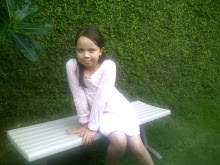



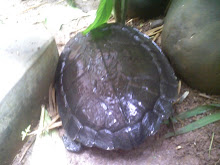


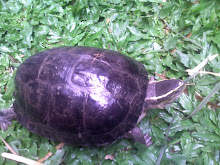
























.jpg)
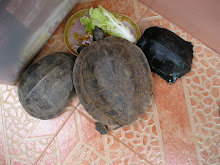
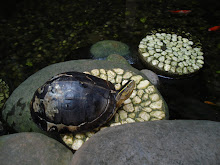+085.jpg)




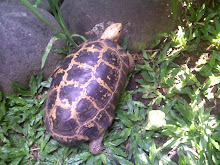
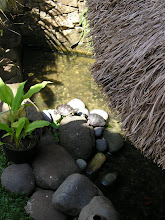.jpg)